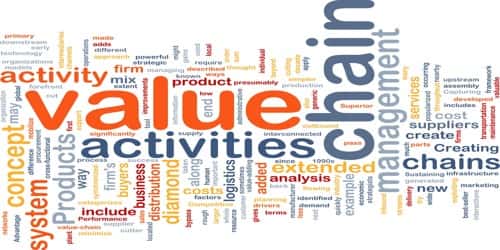Value Chain
A company’s value chain identifies the primary activities that create value for the customers and the related support activities. It is a primary analytical tool for strategic cost analysis. It represents the internal activities a firm engages in when transforming inputs into outputs. It is used by business analysts, project managers, and administrators to evaluate which activities provide the greatest opportunities to maximize profitability and achieve a competitive advantage. The aim of the value chain is to increase profits by creating value at each of the five touchpoints so that total value exceeds the total costs associated with the product.
Value Chain Analysis is a tool for analyzing activities to find those that are most valuable. Value Chain Management is the procedure of identifying and organizing the activities that add value in the assembly of goods and services in an attempt to increase cooperation, increase competitive advantage, and progress consumer fulfillment. Value chain represents all the internal activities a firm engages in to produce goods and services. M. Porter introduced the generic value chain model in 1985. Most organizations engage in hundreds, even thousands, of activities in the process of converting inputs to outputs. These activities can be classified generally as either primary or support activities that all businesses must undertake in some form.















